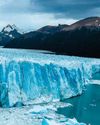Does launching rockets harm the environment?
How It Works UK
|Issue 204
In theory, yes. There are various ways a rocket launch can cause environmental damage, but in practice they make a very minor contribution to such damage compared to things we do in our everyday lives.
-

Any rocket engine is powered by a chemical reaction of some sort, which may produce some polluting gases - although the most efficient reaction of all, the combustion of liquid hydrogen and liquid oxygen to make steam, is also the 'cleanest' in environmental terms. Gases left behind as the rocket blasts through the atmosphere make no substantial contribution to the greenhouse effect compared to cars and ground-based industry. Although these exhaust gases can damage the protective ozone layer about 12.4 miles up, recent research suggests they are only responsible for about one per cent of human-inflicted damage at most. All in all, the harm caused is insignificant compared to how much satellites and space experiments have taught us about the environment and how we can better take care of it.
WHAT MAKES AUSTRALIA’S BLUE MOUNTAINS BLUE?
The blue haze blanketing the Blue Mountains in New South Wales is commonly attributed to the area’s eucalyptus forests. A popular theory is that airborne droplets of eucalyptus oil combine with dust particles and water vapour, refracting rays of mainly blue light.
 Another theory is they appear blue for the same reason the sky appears blue. Dust, water droplets and air particles scatter short wavelengths of blue light more than long wavelengths of red light. The air acts like a translucent plastic sheet, giving the mountains a blue tint. This explains why mountains without eucalyptus sometimes appear blue.
Another theory is they appear blue for the same reason the sky appears blue. Dust, water droplets and air particles scatter short wavelengths of blue light more than long wavelengths of red light. The air acts like a translucent plastic sheet, giving the mountains a blue tint. This explains why mountains without eucalyptus sometimes appear blue. COULD WE SURVIVE BY JUST EATING INSECTS?
COULD WE SURVIVE BY JUST EATING INSECTS?Esta historia es de la edición Issue 204 de How It Works UK.
Suscríbete a Magzter GOLD para acceder a miles de historias premium seleccionadas y a más de 9000 revistas y periódicos.
¿Ya eres suscriptor? Iniciar sesión
MÁS HISTORIAS DE How It Works UK
How It Works UK
20 WEARABLE HEALTH TRACKERS
Whether you strap a wellness coach to your wrist or weave subtle sensors into your clothes, these devices are revolutionising how we track our health
9 mins
Issue 210
How It Works UK
SUPERPOWERED PLANTS
The world of plants is vibrant and diverse, just like this book.
1 min
Issue 210
How It Works UK
SECRET STORIES OF LOST BEASTS
We're all aware of the mighty dinosaurs that once roamed Earth, but there are so many weird and wonderful species that have been lost to time.
1 min
Issue 210

How It Works UK
ALL ABOUT BLIMPS
Is it a bird? Is it a spaceship? No... it's a non-rigid airship
2 mins
Issue 210
How It Works UK
SUPER QUESTERS MISSION: RAINFOREST MAGIC
Join adventurers Leo, Lilli and Bea as they transform into superheroes and journey to the rainforest in the pursuit of knowledge.
1 min
Issue 210

How It Works UK
HOW THE MIGHTY MAMMOTH RULED THE ICE AGE
Meet the prehistoric giants that roamed the Arctic Circle thousands of years ago
4 mins
Issue 210
How It Works UK
Have they found LIFE ON MARS?
Although it's by no means certain, scientists are slowly accumulating evidence that life once existed on the Red Planet
2 mins
Issue 210

How It Works UK
HOW FAST DO GLACIERS MOVE?
The speed at which a glacier flows depends on its mass, the depth and slope of the underlying rock bed and friction.
1 min
Issue 210

How It Works UK
HOW IN-FLIGHT WI-FI WORKS
This technology allows you to scroll to your heart's content while killing time at cruise altitude
3 mins
Issue 210

How It Works UK
HOW WIGWAMS WERE BUILT
Discover the construction and living conditions inside these traditional domed dwellings
1 mins
Issue 210
Listen
Translate
Change font size

